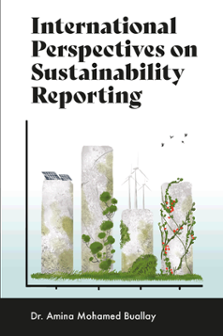
Index
International Perspectives on Sustainability Reporting
ISBN: 978-1-80117-857-0, eISBN: 978-1-80117-856-3
Publication date: 16 September 2022
Citation
Buallay, A.M. (2022), "Index", International Perspectives on Sustainability Reporting, Emerald Publishing Limited, Leeds, pp. 189-192. https://doi.org/10.1108/978-1-80117-856-320221011
Publisher
:Emerald Publishing Limited
Copyright © 2022 Amina Mohamed Buallay. Published under exclusive licence by Emerald Publishing Limited
INDEX
- Prelims
- Chapter 1 Introduction
- Chapter 2 Sustainability Dimensions
- Chapter 3 Sustainability Reporting: History and Development
- Chapter 4 Sustainability Reporting Law and Regulations
- Chapter 5 Relevant Theories to Sustainability Reporting
- Chapter 6 Benefits and Costs of Disclosing Sustainability Reports
- Chapter 7 Sustainability Reporting and Different Firm Performance Measures
- Chapter 8 Sustainability Reporting and Different Economic and Political Consequences
- Chapter 9 Sustainability Reporting Across Sectors
- Chapter 10 Sustainability Reporting in Different Regions
- Index